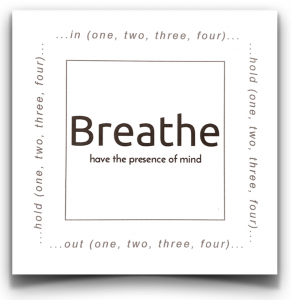 What is one of the most important life skills impacting health, relationships, and achievement? Self-regulation.
What is one of the most important life skills impacting health, relationships, and achievement? Self-regulation.
Self-regulation can be broadly defined as the ability to manage and control oneself. This relates to one’s emotions (moods and feelings) as well as one’s behaviors (actions). It is recognizing when you are experiencing stress or over excitement. It is how you use tools and strategies to adjust your moods and work through feelings. It is exhibiting appropriate behaviors in spite of what you are feeling.
As educators and/or parents, we teach self-regulation to children constantly. It’s what we are doing when we help them complete a task they don’t feel like doing but should (eg. sharing and cleaning up after themselves). It’s also what we are doing when we help children work through emotions such as sadness or frustration.
It’s important to note that research is increasingly showing the connection between a child’s self-regulation and that of their adult caretakers. Meaning, we influence a child’s self-regulation not just through our teaching, but also through our modeling and practice of self-regulation skills. At any moment, how we manage our own emotions and behaviors – that show up in the words and tone we use or through the thoughtful or impulsive decisions we make – can determine how a child responds. It is a cyclical process. So, how can we as the more social-emotionally skilled person in an interaction with a child manage our own emotions and behaviors and support him/her to a favorable outcome? Breathe.
One of my favorite TEDTalks is Breathing happiness by Emma Seppälä. In this Talk, Seppälä uses examples of work with military in combat and veterans experiencing PTSD to explain how we can manage our breathing to change our mood and gain “the presence of mind” to negotiate the most difficult and stressful situations. Seppälä describes the strategy of “square breathing” (inhaling for a count of four, holding for a count of four, exhaling for a count of four, holding for a count of four and repeating) as a way to lower the heart rate and gain composure. I have found this strategy to be a helpful tool to use with students and for myself. Note: I alter the language when working with young students to “Suck in like you are drinking a juice box; hold it. Now, blow out like birthday candles.”
Self-regulation is a skill we continue to develop throughout adulthood. Square breathing is hopefully a helpful tool you can add to your belt. I wish you a wonderful school year and happy breathing!
Learner, Thinker, Writer: Rhonda Mitchell serves Trinity School as the Early Elementary Division Head
I needed this today. Whew! Loved the explanation about sucking in through a juice box straw and blowing out birthday candles for my kindergartner and second grader! 🙂